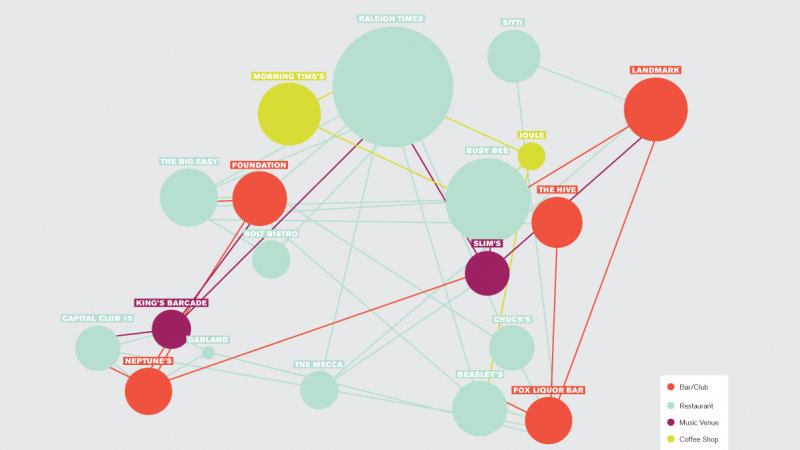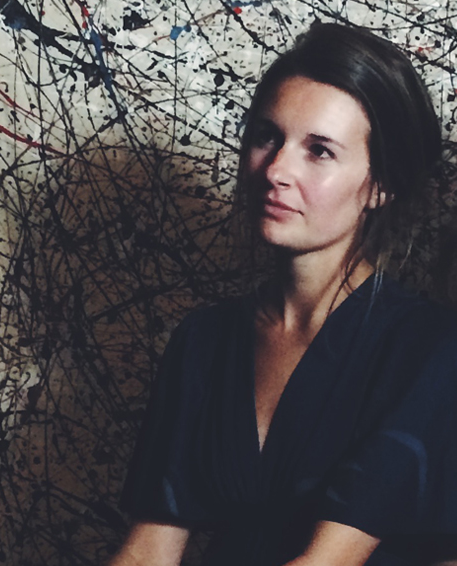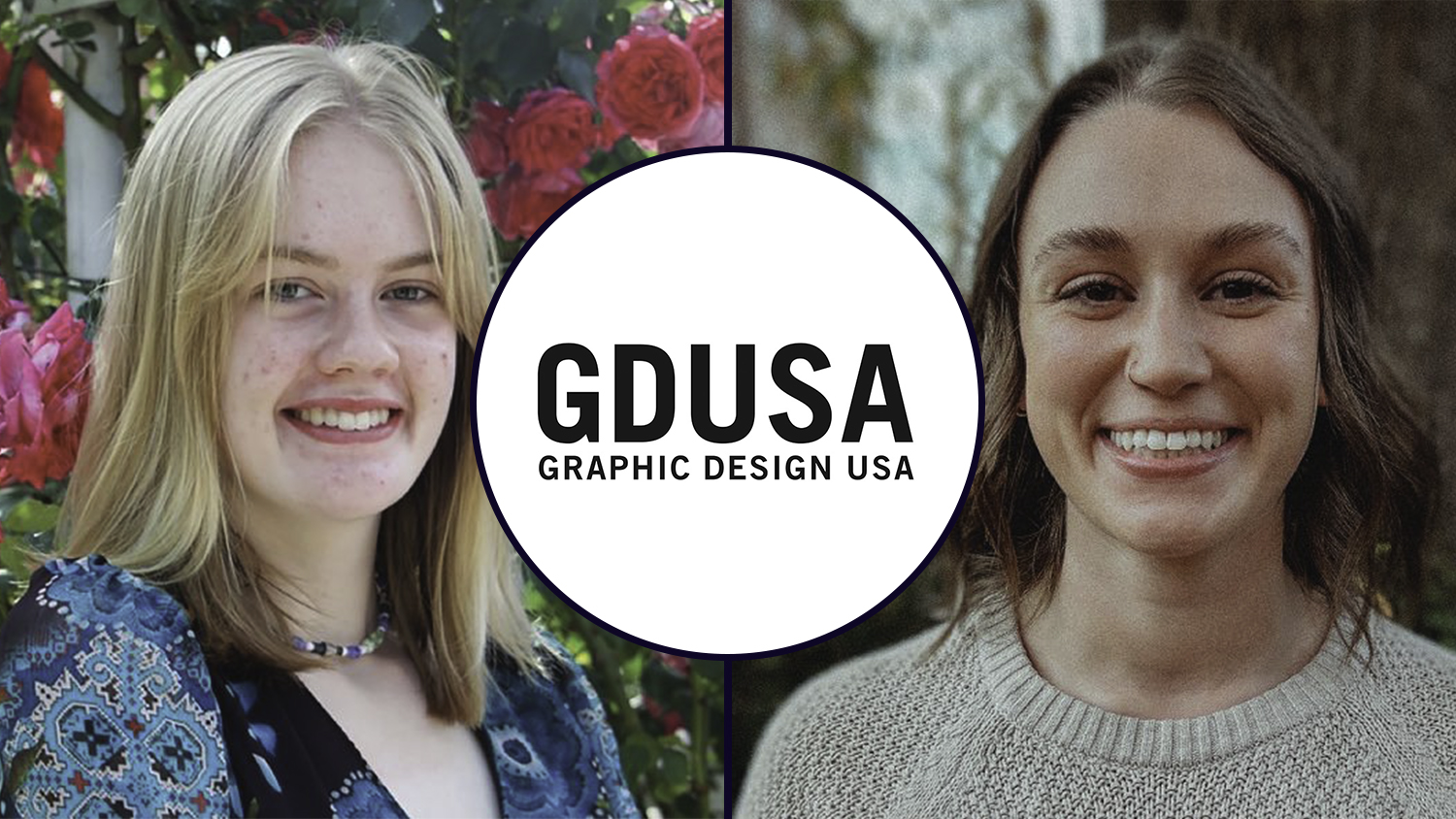An Interruption with Purpose

 “My friends constantly inspire me. I am lucky to have many talented and interesting friends. Having this outlet of unique people in your life gives you great exposure from your ‘bubble,’ and being around people that are different than you – that’s inspiring,” Katelyn Applegate states. She is sincere and matter-of-fact as she speaks. Applegate recently graduated with a bachelor’s degree in graphic design, and previously graduated cum laude from the College of Natural Resources with a degree in sports management and a minor in Spanish in 2009.
“My friends constantly inspire me. I am lucky to have many talented and interesting friends. Having this outlet of unique people in your life gives you great exposure from your ‘bubble,’ and being around people that are different than you – that’s inspiring,” Katelyn Applegate states. She is sincere and matter-of-fact as she speaks. Applegate recently graduated with a bachelor’s degree in graphic design, and previously graduated cum laude from the College of Natural Resources with a degree in sports management and a minor in Spanish in 2009.
After graduating in 2009, she obtained a marketing internship. One of the first tasks assigned to her was to design a newsletter. “This project sparked my passion for design,” Applegate quickly comments. “I tried to find a job in design; however, it didn’t work out.” She did not hesitate in her decision to come to the College of Design. She had no expectations and didn’t worry about the three and a half additional years it would require to obtain a graphic design degree. Applegate would rather love what she did for a living, no matter the associated circumstances, challenges, or interruptions.
Speaking about the first year experience that is paramount to the philosophy and success to the College of Design, Applegate reflects on the transformation in her ability to think as a designer. “The foundation of first year and the fundamentals of design and design thinking and laying the framework for the rest of our time here was so important and impressive. The balance between working with our hands and learning design principles through creative applications such as the wearable project was just awesome,” she says. It is the first year curriculum and immersion at the College of Design that transforms students into designers and gets them excited about design thinking. It is a culture within the College and reflective in all that they do, teach, and believe in. The College of Design teaches students to design for life.
One of Applegate’s fondest takeaways as she reflects on her time here at the College of Design is the impressive faculty and the sense of family that is evident in the scale of the college. Considering that the College of Design has roughly 130 undergraduate students within a university that encompasses more than 34,000, the College benefits from its ability to provide a more personalized experience and proficiency in student-faculty relationships. “I think I’ve connected with certain professors and being able to cultivate relationships with them—to develop a collaboration and to be nurtured,” Applegate says. “Professor of Graphic Design Denise Gonzales Crisp is one of my favorites because she has a way of getting the best work out of people.”
Her degree in graphic design is more than a passion or a ticket to a great career. Applegate is eager to use her talents to make an impact. “As I got deeper into the graphic design program, I learned that it is not just a ‘degree’ in graphic design and using a computer to design things, but it is looking at the world and solving problems,” Applegate reflects. This sense of how a designer can impact, influence, and challenge others to think about things differently is part of the College of Design philosophy and embedded in the educational experience. As stated in the opening remarks within in the mission and overview of the College: “The College of Design prepares designers who, in the broadest sense, shape the world. Our curriculum integrates practical, ethical, and aesthetic thought and action to enhance the meaning and quality of life through the creation of knowledge informing the critical study of artifacts and places.”
Recently, Applegate completed an advanced graphic design studio where she and two classmates, Hannah Soule and McCall Cox [’16 BGD], worked on a community project within the Raleigh Warehouse district. The warehouse district is currently in a growth phase and experiencing a revitalization of new and entrepreneurial businesses moving into the area. The project focused on a way to develop a space that would be seen as the brand of the area—not the traditional brand identity, but more of an esoteric experience. The students researched past logos, images, and the people. The people became the identity of the space and the final result was the development and design of a continuous seating system that connected the physical space and encouraged social interaction. “Our approach was to show how people interact. By designing this integrated seating venue, it creates an identity of being outside and enjoying the space. We mocked up the idea and how the space would be used and the experience it creates,” Applegate says. She is excited about the collaboration and interaction with the community that presented the opportunity to think outside the realm of what design is and toward how design can impact others. “Looking at a space, the people within it, and how to improve the experience—this is what the College teaches us,” she says.
With her degree and creative vision, Applegate is ready for the next chapter in her life. She was recently hired by IBM to work with their Enterprise Social Solutions (ESS) group. This unit focuses on the social networking platforms, chat, and user interface (UX) design programs for the company. Applegate started working at IBM this past summer through a co-op and has had the opportunity to continue with a flexible schedule through her last semester. In January, she will begin full-time.
As a UX designer at IBM, Applegate will be using the knowledge and experience gained at the College of Design. “I’ve learned to design for people through research, interviewing, site visits, empathy mapping, and design thinking which are part of the core curriculum of the College—to constantly iterate, work through process, and try new ideas,” Applegate says emphatically. “It is exciting that I can utilize all that I’ve learned and have such a great understanding and foundation to move forward in design for business.”
One of Applegate’s responsibilities at IBM will be in the area of “search” across all product lines. This is a continuation of the type of work she had been previously involved in. Through the design of “search,” the idea is that this one application or user experience has to work across a variety of contexts. The goal is to continually evaluate and improve the user experience. In “search,” you have to think about all the different types of users and what they are seeing when doing a search: what type of content is showing up, how are they responding, and what type of device are they on. There are so many variables to consider. “As designers, we go through a process of ‘gorilla testing’ and continually iterating new ideas until the solution works. If you think about the amount of information and interruptions that people are constantly being bombarded by – things like chat, emails, and other social media – you can understand the importance of making the experience of ‘search’ seamless,” Applegate reports. As UX designers, it is imperative to make the online experience seamless and consistent. The design and the experience have to equally work without conflict. The goal is to design in “neutral terms,” so that the design does not bring attention to the design. Individuals see the design, but it does not take away from their experience—working without interruption.
- Categories:


